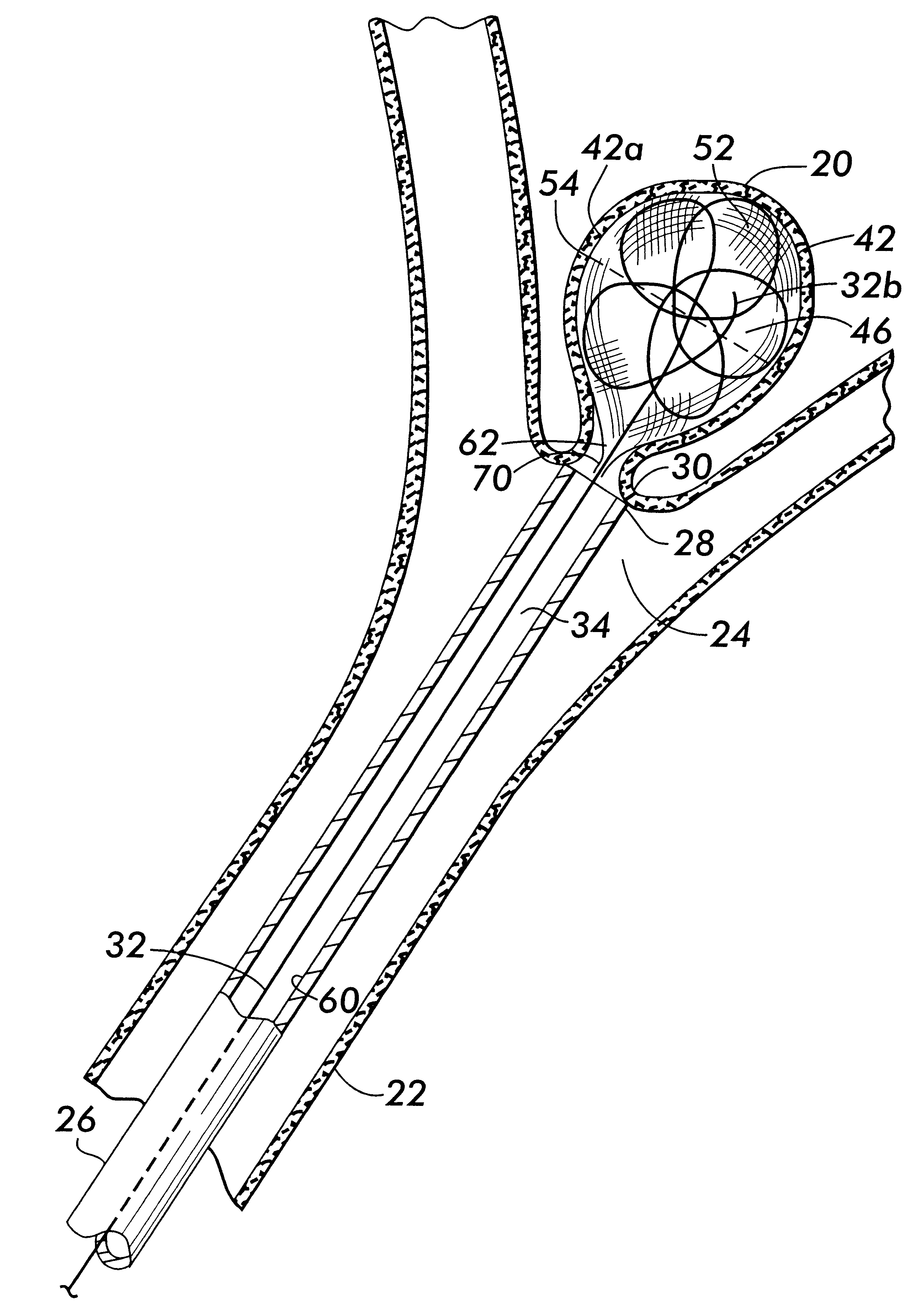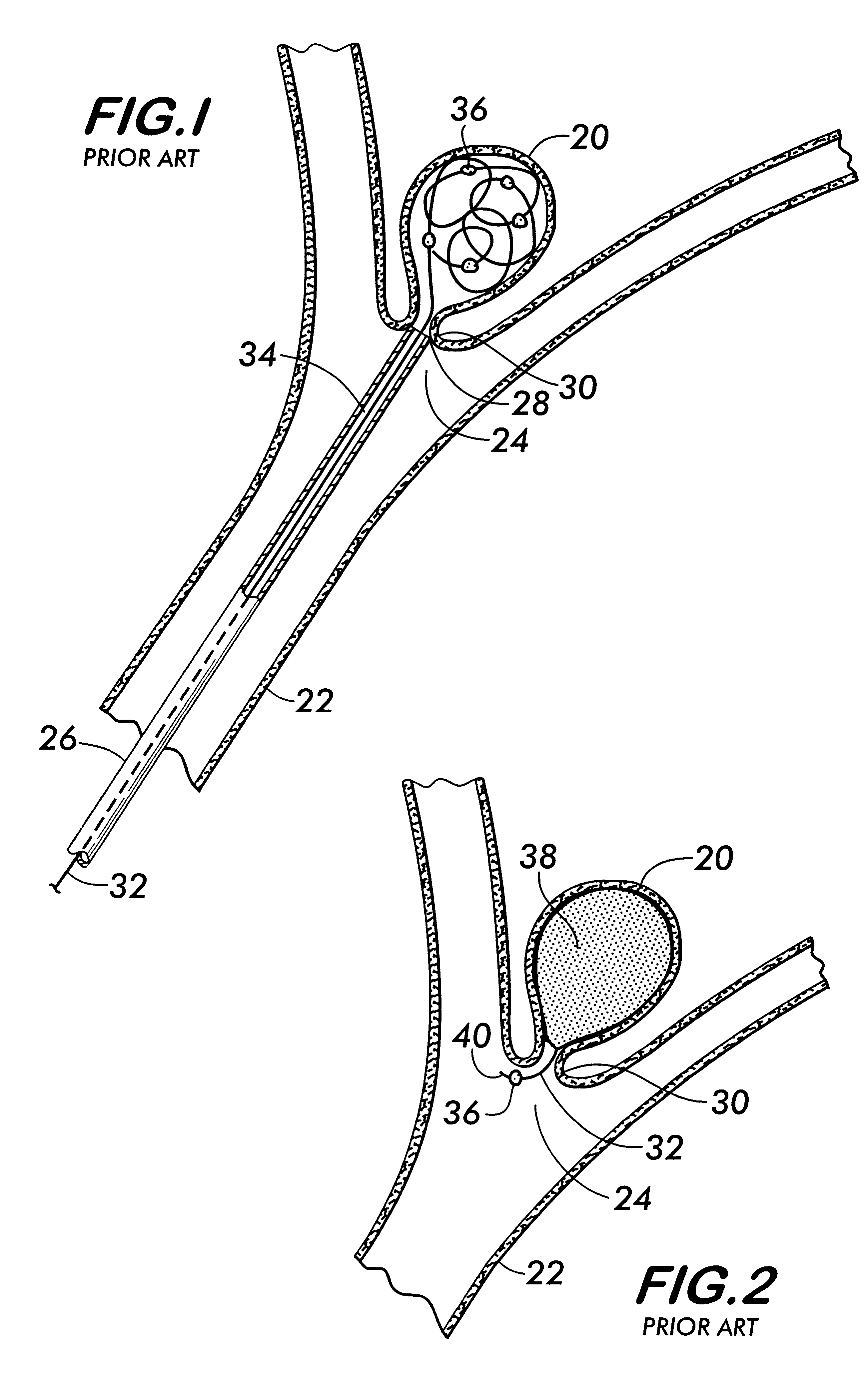Bag for use in the intravascular treatment of saccular aneurysms
a saccular aneurysm and intravascular technology, applied in the field of saccular aneurysm intravascular treatment, can solve the problems of a cerebrovascular saccular aneurysm being especially serious, aneurysms tend to rupture, bleeding ensues,
- Summary
- Abstract
- Description
- Claims
- Application Information
AI Technical Summary
Benefits of technology
Problems solved by technology
Method used
Image
Examples
Embodiment Construction
The problem of a wire end protruding from an aneurysm into an artery in the treatment of saccular aneurysms can be eliminated by lining the aneurysm with a porous bag which will receive the wire and the blood in the aneurysm and contain the wire tangle wholly within the bag. Blood will still clot on the wire and form an occlusion sealing the aneurysm, but no part of the wire will extend out from the bag into the artery where clots can form to break away and cause complications.
FIG. 3 shows a bag 42 suitable for use with the above described aneurysm treatment technique. Bag 42 preferably comprises a sleeve 44 defining an enclosed space 46, the sleeve being formed by a circular braid 48 of multifilament yarns 50. Monofilament yarns could also be used but multifilament yarns are preferred because they provide enhanced flexibility. Textured yarns, flat yarns, microdenier (less than 1 denier per filament), as well as yarns formed from slit tape or film, are also found feasible. Polyester...
PUM
 Login to View More
Login to View More Abstract
Description
Claims
Application Information
 Login to View More
Login to View More - R&D
- Intellectual Property
- Life Sciences
- Materials
- Tech Scout
- Unparalleled Data Quality
- Higher Quality Content
- 60% Fewer Hallucinations
Browse by: Latest US Patents, China's latest patents, Technical Efficacy Thesaurus, Application Domain, Technology Topic, Popular Technical Reports.
© 2025 PatSnap. All rights reserved.Legal|Privacy policy|Modern Slavery Act Transparency Statement|Sitemap|About US| Contact US: help@patsnap.com



